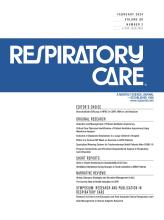This article requires a subscription to view the full text. If you have a subscription you may use the login form below to view the article. Access to this article can also be purchased.
Determining the relationships between risk factors and an outcome suggests the desire for understanding causality regardless of analysis intention. The COVID-19 pandemic inspired a wave of investigations that generated interesting and useful regression models for risk factors associated with various patient outcomes. That said, issues associated with variable transparency, poor model design, and misinterpretation of effect measures have seemingly become prevalent with the rush to generate relevant content during the COVID-19 pandemic. Thus, we enter the conundrum of the infamous Table 2 fallacy.
The Table 2 fallacy often occurs when erroneous interpretations of regression models are drawn. This may be as an explicit statement of causality or a presentation of data that increase the propensity for the reader to misinterpret the individual measures of effect. Multivariable regression (eg, logistic regression, Cox multiple regression/competing risks regression models) not only yields the estimated effect measure of interest but also provides coefficients of the predictors specific to the exposure/outcome relationship. Nevertheless, it is incorrect to interpret the coefficients of the latter as estimates of causal effects; each predictor variable possesses its own set of unaccounted confounders.1,2 In practice, each predictor should be modeled as an exposure for reasonable interpretability of individual effect measures.
One of the more recent high-profile examples of the Table 2 fallacy can be found in a paper published by Williamson et al3 in the journal Nature. Williamson et al reported all the effect measures for each risk factor in their model (ie, Table 2). This isn't necessarily an error but promotes erroneous interpretation of each measure as a model in and of itself. For example, Williamson et al3 present their Table 2 with its adjusted hazard ratio (HR) and interpret each HR as the output of an individual model when they are in …
Correspondence: Brian Ring MSc RRT RRT-ACCS RRT-NPS, Division of Trauma and Critical Care University of Cincinnati College of Medicine, 231 Albert Sabin Way, Room 2108B, Cincinnati, OH. E-mail: ringba{at}ucmail.uc.edu
Pay Per Article - You may access this article (from the computer you are currently using) for 1 day for US$30.00
Regain Access - You can regain access to a recent Pay per Article purchase if your access period has not yet expired.







